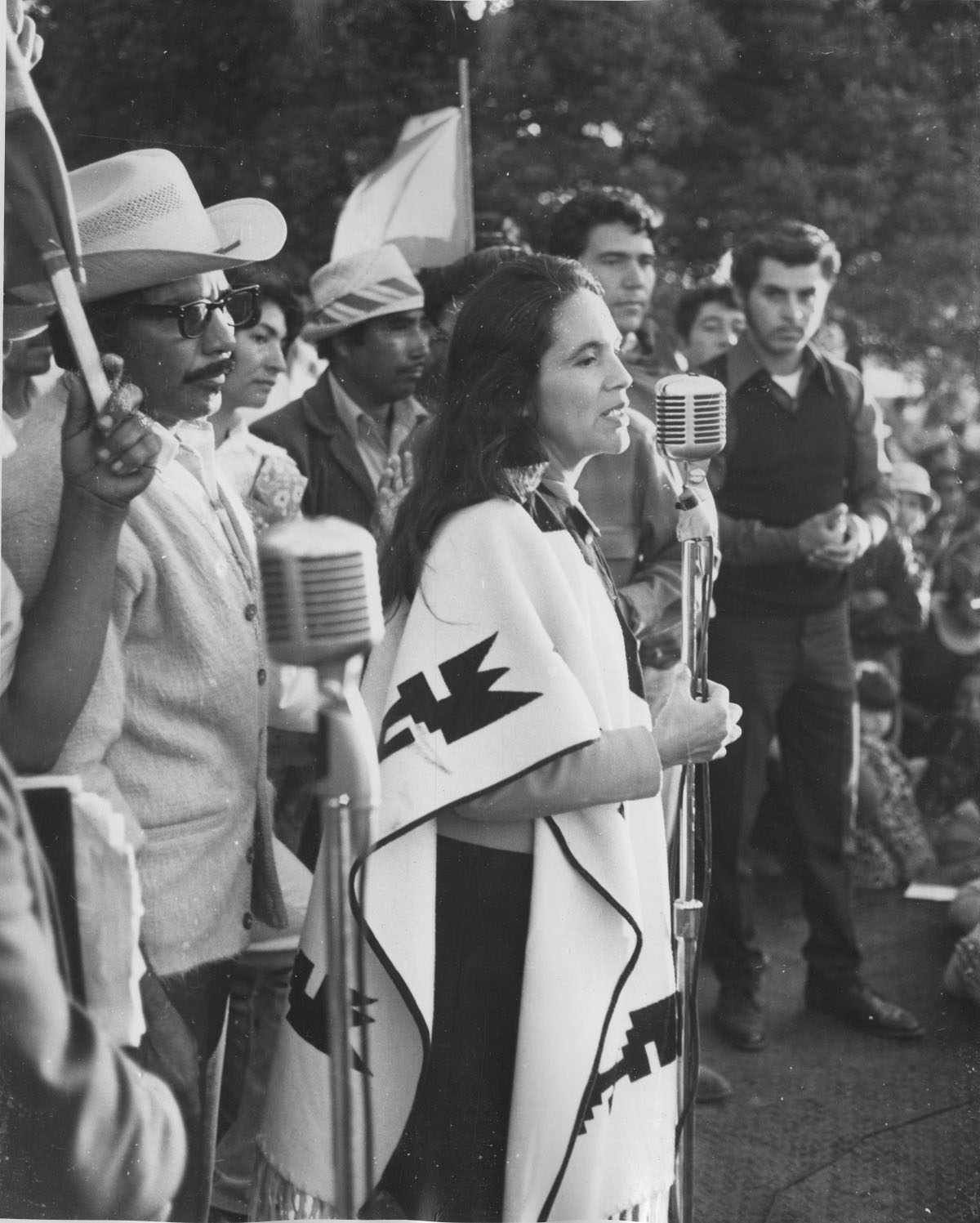In 1966, farm workers marched 300 miles from Delano to Sacramento, California, to bring awareness to their cause.
Harvey Wilson Richards. Harvey Richards Media Archive

Dolores Huerta speaks to United Farm Workers members and supporters during an open-air meeting, location unknown, ca. 1970s
Unidentified photographer. Walter P. Reuther Library, Archives of Labor and Urban Affairs, Wayne State
University, Detroit, Michigan
Using her skills as a teacher, mother, contract negotiator, publicist, organizer and strategist, Dolores Huerta has committed her life to advancing workers’ causes, particularly in agriculture. The Smithsonian Institution Traveling Exhibition Service’s new bilingual (Spanish and English) exhibition, “Dolores Huerta: Revolution in the Fields / Revolución en los Campos,” explores Huerta’s influence on and fight for agricultural labor rights in the 1960s and ’70s. The exhibition opens its national tour at the California Museum in Sacramento March 9, and will continue on a 15-city tour through 2023.
“Dolores Huerta” will feature bilingual text, reproductions of historic and personal photographs, and graphic elements as well as a free, user-friendly, mobile tour smart phone app featuring interviews with Huerta, and a short bilingual documentary video.
The exhibition will detail Huerta’s life from her early influences—such as her mother Alicia and mentor Fred Ross who led to her groundbreaking time as the female voice in the traditionally male-dominated farm workers’ movement—through the United Farm Workers’ grape boycotts and landmark agreements with the grape-growing conglomerates. The exhibition will also feature many of the people who worked with Huerta on the farm workers’ movement, including fellow organizers Larry Itliong and César Chávez and artistic contributors like Xavier Viramontes and El Teatro Campesino.
Before the movement, the California grape laborers faced open discrimination, below-poverty wages and dangerously unsafe working and living conditions. Huerta and her colleagues sacrificed their own well-being to challenge the system and galvanize solidarity for a better life for them. Yet often Huerta’s name and impact are overlooked, including the misattribution of her coined phrase, “Yes, we can!/Si, se puede!” to other historical figures. When most women were still expected to play primarily domestic roles, Huerta introduced new models of womanhood as an energetic picket captain, persuasive lobbyist and unyielding negotiator.
Based on the “One Life: Dolores Huerta” exhibition at the Smithsonian’s National Portrait Gallery, the exhibition was made possible through federal support from the Latino Initiatives Pool, administered by the Smithsonian Latino Center.
The Smithsonian Institution Traveling Exhibition Service (SITES) has been sharing the wealth of Smithsonian collections and research programs with millions of people outside Washington, D.C., for more than 65 years. SITES connects Americans to their shared cultural heritage through a wide range of exhibitions about art, science and history, which are shown wherever people live, work and play. For more information, including exhibition descriptions and tour schedules, visit sites.si.edu.
The Smithsonian’s National Portrait Gallery tells the history of America through the individuals who have shaped its culture. Through the visual arts, performing arts and new media, the Portrait Gallery portrays poets and presidents, visionaries and villains, actors and activists whose lives tell the American story.
# # #
SI-31A-2019